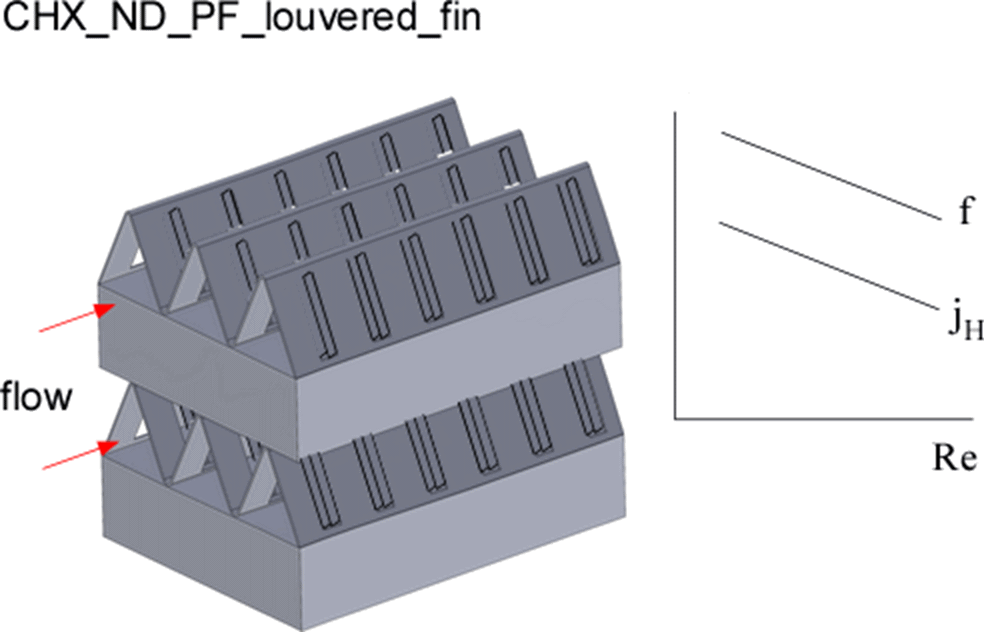
PF louvered-fin ND functions

The procedure:
CHX_ND_PF_Louvered_Fin(TypeHX$, Re: f, j_H)
provides the dimensionless performance associated with a louvered-fin compact heat exchanger surface. These data are from Kays and London (1994).
Inputs
TypeHX$: string identifying the geometry
3/8-6.06: 'PF_louvered-fin_38_606'
3/8(a)-6.06: 'PF_louvered-fin_38a_606'
1/2-6.06: 'PF_louvered-fin_12_606'
1/2(a)-6.06: 'PF_louvered-fin_12a_606'
3/8-8.7: 'PF_louvered-fin_38_87'
3/8(a)-8.7: 'PF_louvered-fin_38a_87'
3/16-11.1: 'PF_louvered-fin_316_111'
1/4-11.1: 'PF_louvered-fin_14_111'
1/4(b)-11.1: 'PF_louvered-fin_14b_111'
3/8-11.1: 'PF_louvered-fin_38_111'
3/8(b)-11.1: 'PF_louvered-fin_38b_111'
1/2-11.1: 'PF_louvered-fin_12_111'
3/4-11.1: 'PF_louvered-fin_34_111'
3/4(b)-11.1: 'PF_louvered-fin_34b_111'
Re: Reynolds number (-)
Outputs
f: friction factor (-)
j_H: Colburn j function for heat transfer (-)
The Reynolds number is defined according to:

where m is the viscosity, Dh is the hydraulic diameter, and G is the mass flux. The hydraulic diameter is defined as:

where Ac is the minimum free flow area, A is the total heat transfer area, and L is the length in the flow direction.
The mass flux is defined as:

where 
The friction factor is defined as:

where r is the density, and to is the equivalent shear stress, defined as:

where DP is the pressure drop due to friction and form drag in the core.
Example
TypeHX$= 'PF_louvered-fin_38_87'
Re=2650
CALL CHX_ND_PF_Louvered_Fin(TypeHX$, Re: f, j_H)
{Solution is:
f = 0.03718, j_H = 0.00814}
Related procedures include: